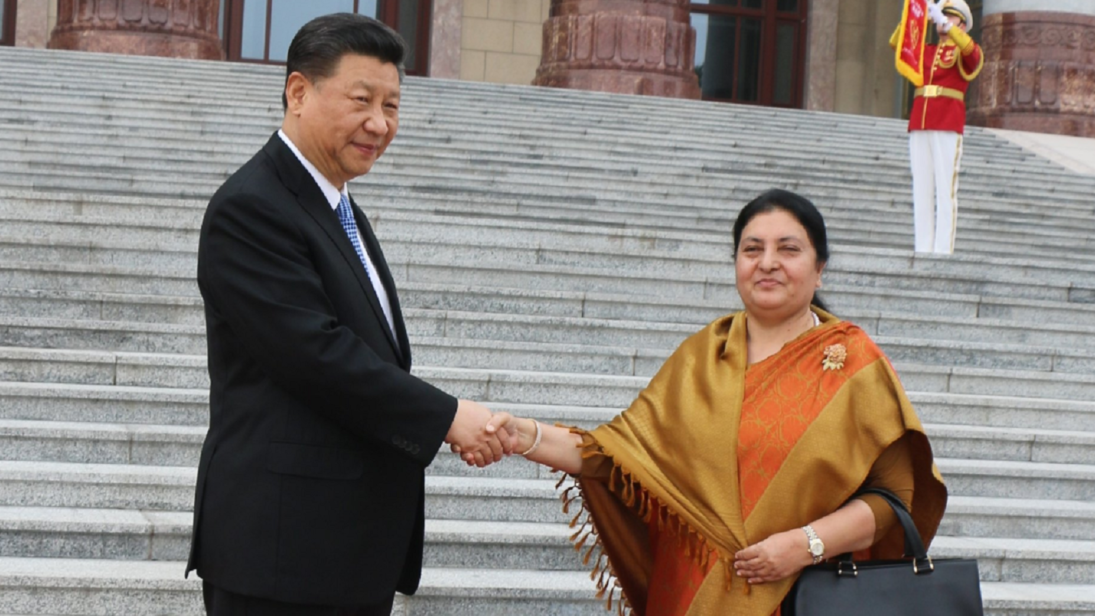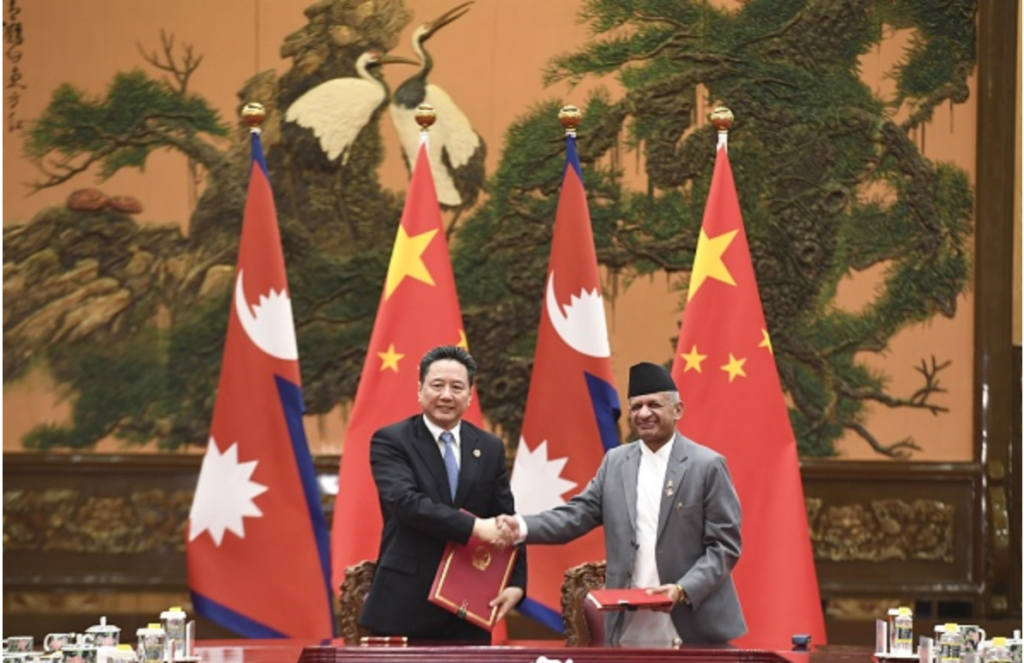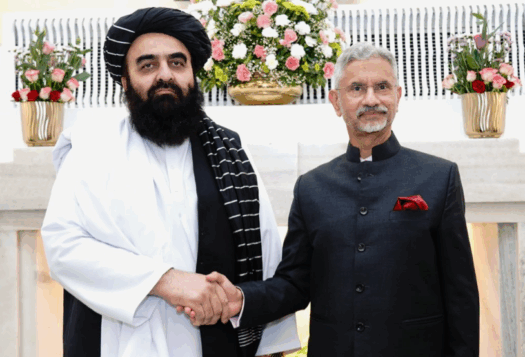
For the second edition of the Belt and Road Forum for International Cooperation held in Beijing late last week, there was high-level participation from Nepal, with President Bidya Devi Bhandari, Foreign Minister Pradeep Gyawali, other ministers, and top leaders of the ruling Nepal Communist Party attending the event. This is significant because Nepal is otherwise adopting a cautious approach to China’s Belt and Road Initiative (BRI). This high-level participation was seemingly to pacify Beijing that Kathmandu is fully committed to BRI despite Nepal’s delay in selecting specific BRI projects due to some domestic issues such as frequent change in government but also concerns over lack of clarity on the modality of Chinese funding and BRI’s risk potential. Although Nepal cannot fulfill its aspirations for development and prosperity without huge investments from China, the economic partnership between Kathmandu and Beijing has some obstacles to overcome.
Slow Journey Towards BRI
BRI was first announced by Chinese President Xi Jinping in 2013 but Nepal formally joined after four years. Though the Nepali Congress (NC)-led Sushil Koirala government had expressed interest in being part of BRI in 2014, there was no tangible progress for a few years. The main reason was a lack of political stability in Nepal as a result of the complex constitution drafting process as well as conduct of three levels of elections in this period. However, external pressure from Nepal’s traditional partner India is widely believed to have been another obstacle. New Delhi is wary of Beijing’s geopolitical intentions in what it considers its sphere of influence. But Kathmandu believes need-based engagement with Beijing under BRI is worth exploring, especially with regard to energy and connectivity projects.
Despite these barriers, the Maoist Pushpa Kamal Dahal-led government agreed to sign a Memorandum of Understanding (MoU) with China on BRI in the final months of its tenure and in May 2017, Nepal officially signed the MoU, only a few days before the first BRI conference in Beijing. With the signing of the MoU, new avenues for bilateral cooperation were expected to open. The major thrust of the MoU was to promote mutually beneficial cooperation between Nepal and China on infrastructure and trade connectivity, financial integration, and movement of people.
Misgivings About Engaging with China
Having watched closely the experience of other South Asian countries (such as Sri Lanka) with BRI, Nepal is treading slowly on finalizing projects, seeking more information about funding modalities and its exposure to risk before signing on the dotted line.
Recent comments by the new Chinese Ambassador to Nepal, Hou Yanqi, underline the important place Nepal holds in China’s BRI: “The northern part of Nepal is bordered by Tibet and Nepal is located at a vital place along the BRI […]The Himalayan country will play a role as a channel to connect China’s provinces in the western regions with the world,” she said. China too is critical for Nepal, which is seeking foreign investment in infrastructure projects to boost its economic progress. In addition, as indicated by the signing of a transit and transportation protocol between Beijing and Kathmandu recently that will give Nepal access to Chinese sea- and land ports, Nepal sees China as an important partner in reducing its traditional trade dependence on India.
However, having watched closely the experience of other South Asian countries (such as Sri Lanka) with BRI, Nepal is treading slowly on finalizing projects, seeking more information about funding modalities and its exposure to risk before signing on the dotted line.

Divergences on Funding Modality
Funding modality is emerging as one of the major challenges between the two countries. Nepal prefers aid or grants but China favors loans […] In fact, one of the most anticipated projects under BRI, the Keyrung-Kathmandu rail, seems to be held up due to lack of agreement over funding modality.
The Joint Communique of the Leaders’ Roundtable, issued after the conclusion of the two-day BRI forum, mentions the Nepal-China Trans-Himalayan Multidimensional Connectivity Network, including the Nepal-China cross-border railway, as a key project of BRI. But until now, no specific projects in this network except the railway have been identified. In fact, even though Nepal initially identified 35 projects for development under BRI, the Chinese side asked Nepal to reduce the list to nine and one of the key reasons for this seems to have been differences over the type of funding for projects.
Funding modality is emerging as one of the major challenges between the two countries. Nepal prefers aid or grants but China favors loans, according to former Nepali Ambassador to China Mahesh Maskey. In fact, one of the most anticipated projects under BRI, the Keyrung-Kathmandu rail, seems to be held up due to lack of agreement over funding modality–Nepal has requested that China build this railway line on a grant basis, however, the matter is yet to be resolved.
Need for Risk Analysis
There is a growing push from political elites, civil society, and environmental experts within Nepal that a thorough risk analysis of BRI projects is needed before committing to them. Nepal’s Former Secretary Gyan Chandra Acharya has underlined the need for a multi-stakeholder approach and wider discussions on BRI projects. “There are good and bad examples of BRI in many countries. There is a need of undertaking cost-benefit analysis, and investment should be transparent, and projects should be selected as per our priority and national interest,” he said.
Experts have also cautioned the government that it must consider employment of the local population when selecting BRI projects, having witnessed the example of countries like Pakistan where Chinese companies brought their own labor to work. There are also concerns about the environmental impact of the proposed Kerung-Kathmandu railway since it may pass through parts of the Langtang National Park, a protected forest area.
Policy of Cautious Optimism
In the initial years after the BRI was introduced, discussions in Nepal revolved around whether the country should join the BRI or not. However, since the MoU was signed, there has been kind of an all-party consensus that Nepal should go ahead with the BRI, but maintain a cautious approach. There is no doubt that Nepal could reap benefits from China’s BRI, especially in its infrastructure development and energy sectors, but a cost-benefit analysis of each individual BRI project based on domestic needs and national interest is key. Nepal cannot develop without taking BRI loans but there needs to be clarity and transparency from the Chinese side regarding repayment terms and conditions. When finalizing BRI projects, the Nepali government should hold wide consultations with stakeholders such as the private sector, opposition political parties, civil society, and experts such that all are on the same page regarding the opportunities and risks that BRI presents.
Editor’s note: With the second edition of the Belt and Road Forum for International Cooperation being held recently, all eyes were on whether China had learnt any lessons from implementing the project for five years and how it would adjust its plans to address member states’ concerns. But what have the smaller states in South Asia such as Sri Lanka, Nepal, and Bangladesh learnt from their experience with the Belt and Road Initiative (BRI)? How has their engagement with BRI evolved over time and where is it headed in the future? These are some of the questions that this series explores, which can be read in full here.
***
Image 1: MoFA Nepal via Twitter (resized)
Image 2: Madoka Ikegami/AFP via Getty Images


